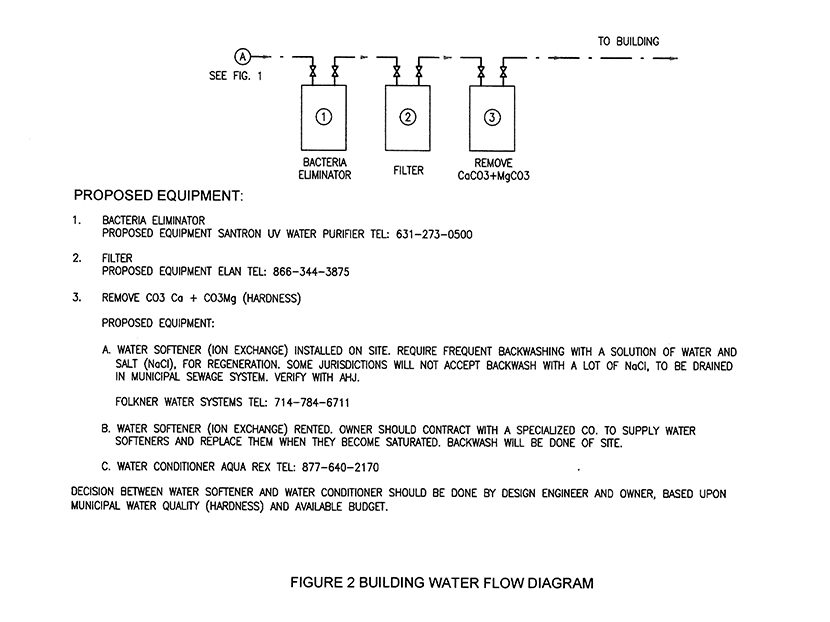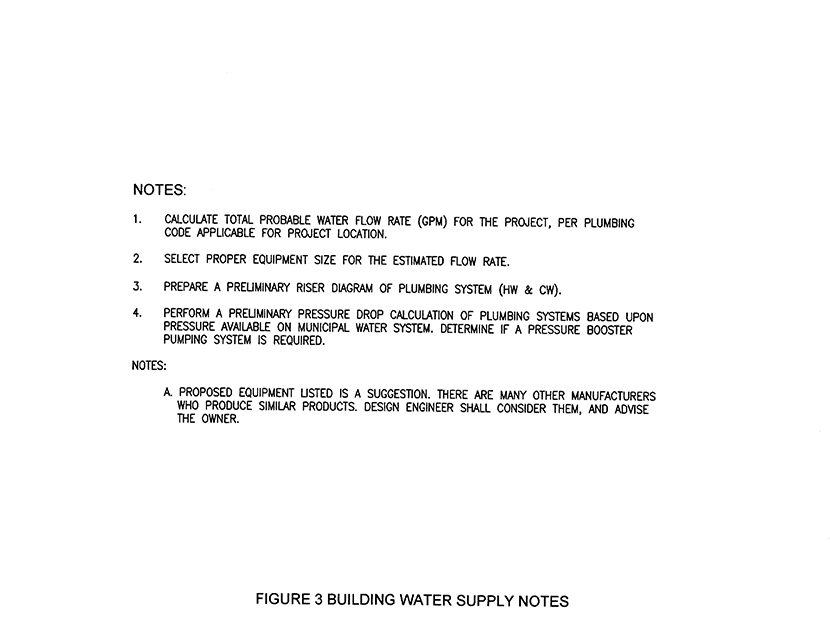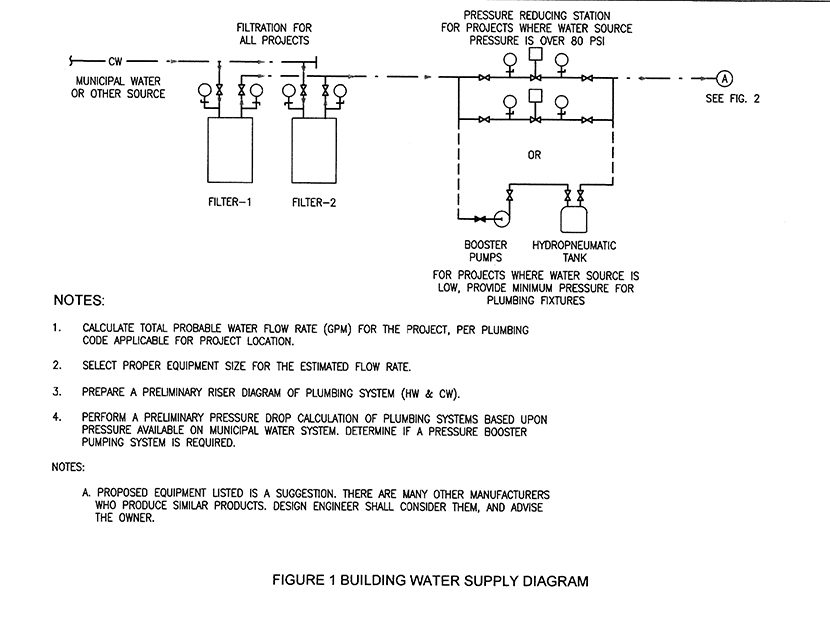Plumbing, Hydronics Systems and Legionella
New suggestions regarding plumbing and hydronics systems design, to reduce Legionella development in commercial buildings.










During the last three to four years, a lot of articles written by those who specialize in the plumbing and HVAC professions have included different facts about Legionella bacteria and contamination with bacteria of domestic water inside the buildings.
Microbes, such as viruses and bacteria, were the first form of life on this earth. Based on studies of ancient sites, it is estimated that they were present on earth about 3.5 billion years ago. Compared with the fossils of homo sapiens (ancestors of humans) whose fossils appeared approximately 200,000 years ago, the microbe fossils had plenty of time to develop and specialize and are very resistant and adaptable to environmental changes.
Today, we have tens of thousands of species of highly specialized microbes living inside our bodies, as well as in water, air, underground and elsewhere. This makes the work of microbiologists to find something like a vaccine very difficult and time consuming.
For instance, the common flu is produced by viruses that enter our body when we inhale. Specialized laboratories work hard to discover a vaccine that will help our immune system destroy the virus. Discovery of a vaccine, testing it, approvals, packaging and making it available to the population takes an average of three to five years. When the next flu epidemic comes, the vaccine produced is already obsolete, because the new virus has mutated, and thus rendering the vaccine ineffective.
The main reason microbes last for so long is that they multiply exponentially and asexually, and they possess the capacity to mutate and resist extreme environmental changes.
The Legionella threat is real
With everything we do to fight Legionella in the U.S., there are still more than 5,000 reported cases of legionnaires disease each year, and 10 percent of those cases result in death. Worldwide, the situation is much worse.
The Center for the Disease Control (CDC) describes Legionella Pneumophila as a respiratory disease caused by bacteria called Legionella. The bacteria were discovered after a 1976 outbreak in a Philadelphia Convention center of the American Legion. A total of 127 were affected from a type of pneumonia, and 12 died. (For more information about the history of Legionella and related outbreaks, visit cdc.gov/legionella.)
Most of the articles I have read discuss the danger of Legionella bacteria in potable water distribution systems and how to monitor the development of bacteria inside the pipes. The recommended solution is disinfection with recirculation of super chlorinated or superheated water (160 F).
None of the articles I have read recommend any change of how plumbing piping should be installed to facilitate recirculation of all piping. Present technology allows for an uncounted number of dead ends. To maintain control over Legionella development, plumbing engineers recommend in unanimity two methods: When potable water reaches high levels of bacteria, all piping shall be recirculated with super-heated hot water (160 F - 180 F) or super chlorinated water. In order to reach the entire water piping, the piping installation technology must be revised.
I am not a doctor or microbiologist, and my education, and experience is in engineering. But I am fascinated and interested to learn more about microbes. As a plumbing engineer, I designed many potable hot and cold water distribution systems for various structures. The subject of transmission of microbes in potable water systems was and is a prime concern of organizations such as ASHRAE, ASPE, CDC.
Recently published documents (see ANSI/ASHRAE 188- 2015 Legionnelosis: Risk Management for Building Water Systems) suggest that transmission of microbes in potable water systems can be solved primarily by proper design and maintenance. This is a huge responsibility and liability for plumbing engineers, designers, contractors and owners. Without specific design directions, the standard is very confusing and will be a good field of litigation for lawyers.
It also will require an additional design fee, as well as an increase to the cost of construction to comply with all the recommendations included in ANSI/ASHRAE Standard 188-2015, especially for the construction of health care facilities.
I have read several proposed solutions to limit or stop the growth of Legionella bacteria in plumbing systems. Some of them suggest temporarily increasing the hot water temperature to 160 F and circulating super-hot water throughout the system. This is supposed to kill all the bacteria in the plumbing system, but in the mean time, will make the hot water system subject to scalding. Moreover, recirculation of super hot water, for existing buildings, will not reach the entire piping system, which was installed based on the common practice of using a lot of “dead ends.”
Common practice today and in the past, has been to run a horizontal water header and extend branches vertically to supply the fixtures. All vertical branches will not be affected by the super hot water. These dead ends will contain enough live bacteria to start new colonies of millions of new bacteria. Moreover, since plumbing systems are open systems, every time a plumbing fixture is used, new bacteria will be admitted in the system from municipal water.
If temporary increase in water temperature will be the procedure to destroy bacteria, then each fixture using hot water must be equipped with a point-of-use thermostatic mixing valve to limit delivery of hot water to the fixture at 105 F to 110 F. Also, the water heater, or any other equipment that provides hot water, should be capable of delivering water at 160 F.
Another suggestion to control bacteria is to temporarily add additional chlorine, or other chemicals and recirculate in the plumbing system piping of super chlorinated water. This would result in the situation with the dead ends mentioned above, and the intention to kill all bacteria will not be efficient.
Definition of potable water
The big puzzle in my mind is that the acceptable definition of potable water to be furnished by water purveyors is not pure H2O. The EPA definition of potable water allows small amounts of various minerals and salts, plus a small amount of E coli (which is a species of bacteria).
For instance, potable water delivered by the Los Angeles Department of Water and Power, after all water treatments, includes various quantities of chemicals such as: carbonates, bromate, fluoride, halo acetic acids, lead, trihalomethanes, and coliform bacteria among others.
Exponential growth of bacteria
All bacteria reproduce by exponential, asexual reproduction, which results in cell division. A single cell bacterium has an extremely rapid way to multiply. For instance, one bacterium will divide, and now we have two. These two will divide again and we have four. Four will divide again and we have eight. This is called exponential growth. This process of multiplication repeats, and in a matter of few hours the new colony of millions of bacteria is formed.
In the lab, the growth of bacteria was monitored and on average, the lab found several phases:
- Lag phase. Bacteria initially adjust to the new environment, test tube or dish (About 8 hours)
- Exponential phase. Bacteria start dividing (About 18 hours)
- Stationary phase. When the space becomes too small or the nutrition is exhausted, bacteria stops to multiply (About 5 hours)
- Death phase. Eventually bacteria show loss of viability and die (About 10 hours)
Water temperature effect on Legionella
Here is an abbreviated schedule to show the effect of water temperature on Legionella development:
|
Water temperature |
Effect on Legionella |
|
|
68 F or less |
Can survive but will not multiply |
|
|
68 F to 122 F |
Growing range |
|
|
95 F to 115 F |
Ideal growing range |
|
|
120 F and above |
Will survive but will not multiply |
|
|
130 F |
Will die in 5-6 hours |
|
|
140 F |
Will die in 30 minutes |
|
|
150 F |
Will die in 2 minutes |
|
|
160 F |
Will die instantly |
|
Water piping for HVAC
Water piping serving HVAC projects (hot water and chilled water) is a closed system, where the water filled at the beginning is continuously recirculated. Make-up water, in small quantities, is added to compensate water lost due to leakage of the system. The water is maintained at temperatures of 180 F to 200 F for hot water, which kills bacteria, and 40 F to 45 F for chilled water, which does not allow bacteria to multiply. Special chemicals (bactericides) can be added to the system to keep bacteria from multiplication or to kill them.
Another system that is an exception is the water from the cooling tower (condensing water). This water system is an open system because condensing water comes in contact with outside air and will add more bacteria and viruses when the cooling tower water runs through the cooling tower.
A recent article published in Water Conditioning and Purification, September 2017, written by Timothy Keister CWT, FAIC, titled “Using Softened Water for Cooling Towers,” makes the argument for the benefits of using soft water for cooling towers. As long as we plan to use soft water for domestic water, will be advantageous, to combine the load of soft water for domestic usage with the load for cooling towers.
Potable water piping
Potable water piping serving plumbing projects is an open system, where every time a faucet is open for flushing a lavatory, sink, urinal, etc., a fresh quantity of municipal water is admitted into the system. This fresh water admits in the plumbing systems: salts, impurities and bacteria allowable in the municipal potable water systems based upon the archaic EPA definition.
Therefore, the proposed procedures to prevent growth of bacteria for HVAC projects must be different than the procedures for plumbing projects.
Some bacteria produce a biofilm, which will deposit inside the pipes, and will protect other bacteria covered by biofilm from being destroyed by biocides or temporary superhot water (160 F) circulated occasionally.
Proposed solution
The way I see it, the water entering the building from municipal piping should be free of any microbes and to have minimal residual salts, minerals or other chemical compounds. For instance, minerals such as calcium carbonate (CO3Ca) or magnesium carbonate (CO3Mg), will eventually deposit inside the pipes and equipment; will produce a scale, which will increase the friction loss (more energy to move the water); will corrode the pipe and will be an excellent place for bacterial development. Various U.S. zones contain water with a high concentration of these compounds (hard water). Removing them from water entering the building will save a lot on energy and maintenance. This is beneficial for plumbing and HVAC systems.
Above, Fig. 1, Fig. 2 and Fig. 3 show proposed equipment to be installed where municipal water piping enters the building. This equipment will improve the water quality distributed in the building.
Plumbing water piping disinfection
Plumbing piping is usually delivered and stored onsite with both ends open. During this time,
a lot of contaminants (sand, dust, small animals and bugs, etc.) enter the pipe. Then the pipe is taken from the outside storage and moved in the trench or inside the building to complete the layout. All the debris accumulated during storage is now inside piping. This will lead to serious problems when the water starts to circulate. Valves, equipment, and filters will begin to clog soon after. This calls for the attention of the installer to handle piping with more attention on pipe contamination during transportation, site storage and during installation. Here are some recommendations:
- Pipes and materials used for potable water piping systems shall be certified to comply with NSF Standard 61.
- Piping shall be delivered onsite with caps on all open ends and stored to prevent contamination with foreign particles such as sand, dust, rust, etc.
- At the end of each working day, all open pipe ends shall be capped to prevent contamination.
- A thorough flushing and disinfection of the plumbing piping system, in accordance with AWWA C 651 or as required by code, with chlorine or other bactericides, and final flushing must be performed before plumbing piping is accepted to be used by the occupants.
- After disinfection, samples of water shall be collected and submitted to a certified lab to determine the concentration of bacteria. If bacteria are detected, the procedure shall be repeated.
- Also, water entering the building from municipal piping, should have a device, for instance a UV generator, to destroy all bacteria and viruses for potable water, supplied to the building occupants.
- Potable water systems designed and installed based upon traditional practices include uncounted number of dead ends, serving plumbing fixtures, water hammer arrestors, flushometer valves, equipment, etc. Bacteria once admitted in the plumbing systems will be very difficult, if not impossible, to destroy.
Water management plan (WMP)
ANSI/ASHRAE Standard 188-2015 requires that all buildings, except single family, shall have a WMP.
We should differentiate WMP for existing buildings from WMP for new buildings. Reason being that an existing buildings’ plumbing systems were designed and installed with no special attention to WMP. A new building’s plumbing systems however, should be designed and installed to comply with new rules to restrict or limit exponential multiplication of bacteria or other pathogens in plumbing systems. Building owners and managers, as responsible parties, should have a plumbing system that can be monitored and disinfected, if necessary. This can be accomplished by proper design.
Smart loop hot water recirculation system
Recently I read about a relatively new system for recirculation of hot water for large buildings, called “smart loop system,” offered by Viega, as part of its pro press piping system. The system includes hot water recirculation pipe (HWR), inside hot water (HW), and a special “double drop elbow,” which eliminates dead ends for supplying water to fixtures.
Fundamental criteria to combat micro organisms in potable water piping
- Prevention is preferable to cure.
- Micro organisms have an extraordinary fast way to multiply and mutate to be resistant to antibiotics or other medications we invent.
- Remove or destroy any micro organisms, before potable water enters building piping distribution systems.
- Remove salts and minerals from water supplied from municipal pipes. Some of these minerals will eventually precipitate and deposit inside pipes and equipment and will be an excellent place for micro organisms to hide and multiply. This can be accomplished by using water softeners or other procedures.
Best Available Technology (BAT)
The fight against Legionella just started. It appears that bacteria are a step ahead of our technology to destroy them and protect our population. Therefore, in the near future, we should expect more outbreaks of Legionella disease. In the meantime, we should adjust and continue our fight, by using revised and improved BAT.
The fight against Legionella is very complex and will require years of research and trial and error solutions. I believe we should form a committee, perhaps under ASPE leadership, that has a precise scope, budget and schedule.
Rules and regulations to limit legionella development
There are several documents we should be aware of, regarding monitoring, inspections, testing and recording the changes of water systems in the buildings.
At this time, I am aware of following documents:
- ANSI/ASHRAE Standard 188-2015 Water Management Plan (WMP)
- Center for the Disease Control (CDC) tool kit
- Center for Medicare Services (CMS), June 02, 2017 Inspecting Hospitals and Nursing Homes for Legionella requirements.
In the event that activity of Legionella is found, will be necessary some disinfection or other procedures applied to water systems. None of documents listed above, provide any specific procedures for remediation. This part of activity is left to each facility.
I can’t imagine the level of confusion, when each facility will potentially use a different way solve the problem.
I agree that for old buildings, already in operation, the remediation will be specific for each building to accommodate piping and controls available.
But for new buildings we have to design piping distribution systems, to facilitate the remediation. This is what I propose in this article. This is a proposal, based upon my limited knowledge of equipment and technologies available.
I am asking everyone interested, to send me their suggestions and comments.
Request for review and comments
I prepared this document, based upon my limited knowledge of all equipment and devices available to combat multiplication of micro organisms in potable water systems.
It is agreed by all authorities, that micro organisms and chemicals in potable water systems are detrimental to health and safety of population. As professionals, we should use all existing and new technologies, to prevent spreading diseases and allowing deposits of scale on pipes and equipment of potable water systems.
All these suggestions, really will require a new approach for designing these water systems. We should not expect that a plumbing engineer/designer alone will come up with a proper design of improved systems.
This complex task, calls for collaborative effort of many engineers, contractors, manufacturers and micro biologist. ASPE is the organization which should take the lead.
Please reach out with your comments and suggestions to 323-931-3770, or demergian@sbcglobal.net.




